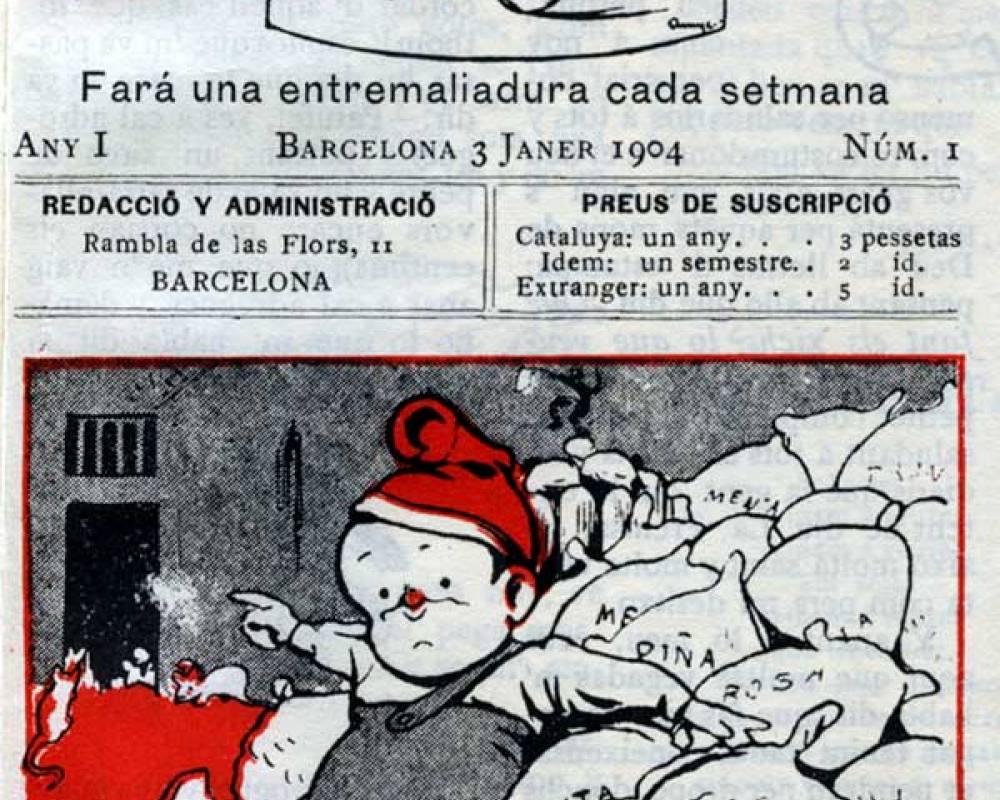
The comic as we know it today is a cultural product of the industrial age, related to publishing and mass distribution.
The most direct reference we have in Catalonia is the style of comic known as the Auca, but it would not be until the years just prior to the Spanish Civil War that comics would reach mainstream popularity through children's magazines (En Patufet) and satirical magazines, aimed at an adult audience. In publications such as the Esquella de la Torratxa, ¡Cu-Cut! or the Be Negre, authors like Joan Oliver (Pere IV), Pere Calders and Avel·lí Artís Gener (Tísner) criticised what was going on in politics of the time with graphic and written humour.
The Catalan comic time machine
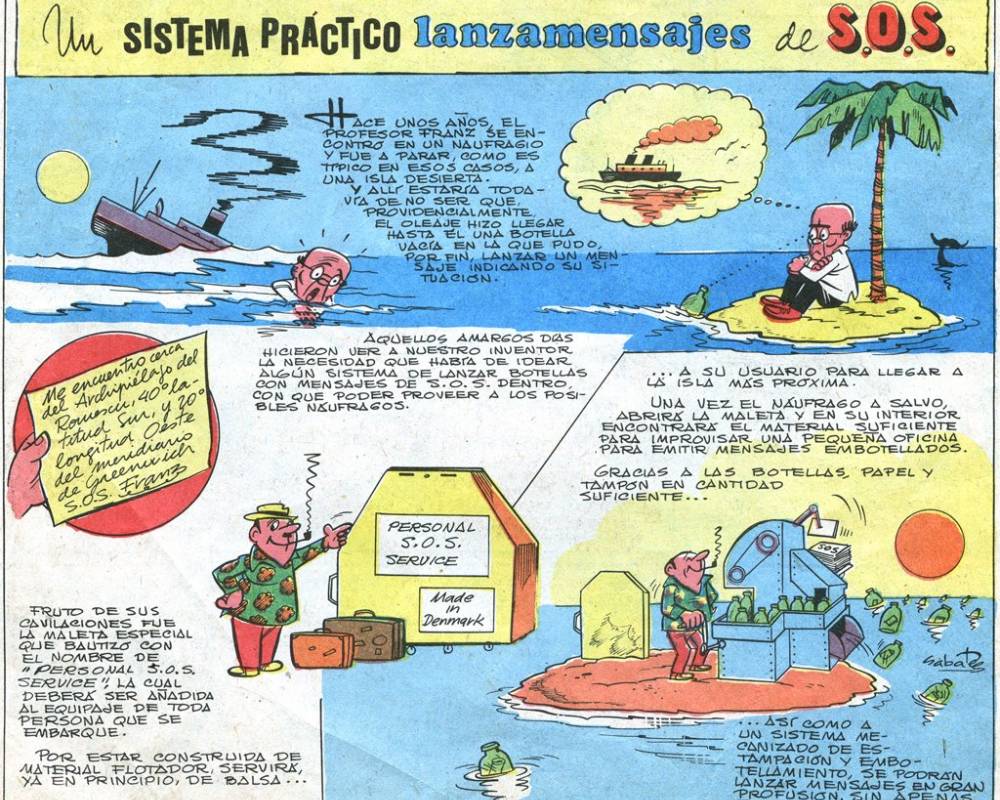
With the coming of the francoist dictatorship, humour became plain and costumbrist. Views that were overly critical of the regime as well as those that used Catalan were both censored and many publications vanished. By contrast, children's magazines in Spanish such as Pulgarcito and TBO were experiencing a golden age in Catalonia. Their design evolved to the point where today we can recognise them as comics. In other words, more drawings than text.
Historietes were a cheap and popular product that were a feature of every home for 40 to 50 years. Most of them were published by Catalan publishers. The most popular one was Bruguera, which brought personalities to the public that are still remembered today.
Vinyetes of Profesor Franz from Copenhagen. Special TBO "Extra de piratas y náufragos" (pirates and shipwrecks), 19 58. Flickr by Cdrcc - CC BY-NC-SA 2.0
In 1961, dominated by the bishops of Solsona, Girona and, especially, Vic, Cavall Fort was born, a magazine in Catalan made to stimulate reading amongst boys and girls between the ages of 9 and 15 that became a symbol during the dictatorship.
As well as home-grown comics like Ot el Bruixot de Picañol, the Franco-belgian style of comics was introduced, with examples such as The Smurfs, Tintin, Asterix and Obelix and Lucky Luke. The magazine, which is still being edited today, has featured work by key names in Catalan culture. Along with illustrators like Cesc and Pilarín Bayés, there were writers taking part such as Joaquim Carbó, Josep Vallverdú, Salvador Espriu, Pere Calders, Maria Aurèlia Capmany and Montserrat Roig. They even published works by Joan Miró, Antoni Tàpies and Josep Maria Subirachs.
Cavall Fort, National Prize for Culture 2011
Cover of Cavall Fort, nº 1. Wikimedia Commons. Mireia Tremoleda. CC BY-SA 3.0
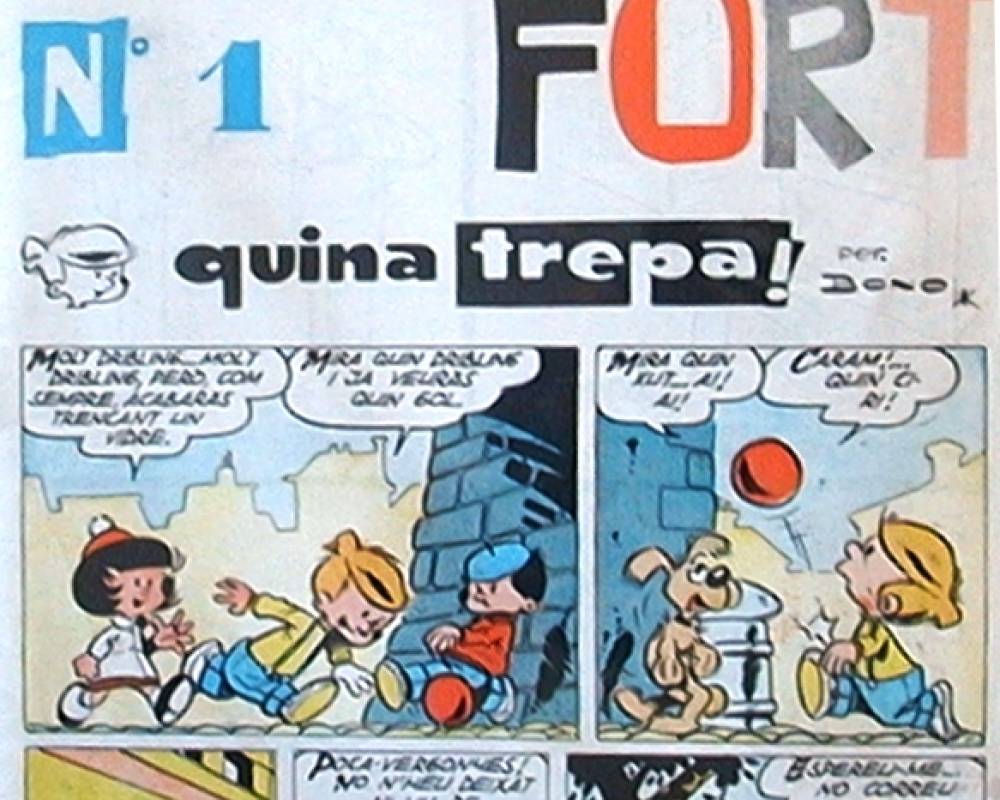
The evolution of comics in Catalonia has been noteworthy. The transition to democracy heralded the return of cutting, critical and politically incorrect humour. From the 70's onwards, an underground circuit was formed with daring and provocative ideas. Today, 95% of Spanish comics are edited in Catalonia, with many of its illustrators having found international recognition.
A lot of the most memorable comic characters were born or lived in Catalonia and are a reflection of a moment in our history.
So, while Massagran (Ramon Folch i Torres – Josep Maria Madorell, 1910) dealt with some of the main topics of the era such as the superiority of white men over other cultures, La família Ulises (Joaquim Buigas - Marino Benejam, 1945) saw the appearance of themes relevant to Barcelona in the 40's and 50's like the black market, the first cars, the cost of accommodation and the arrival of television. In other matters, the rogue, poverty and post-war desires were protagonists in the adventures of the famous detectives Mortadelo y Filemón (Francisco Ibañez, 1958), while Catalan sanity and rage were addressed in Jep i Fidel (Josep Maria Madorell, 1967).
Other notable characters from the history of Catalan cinema include Ot el Bruixot (Picañol, 1971), Esther (Purita Campos, 1971), Superlópez (Jan, 1973) and Makinavaja (Ivà, 1986).
Interview with Francisco Ibáñez, creator of Mortadelo y Filemón. 20 Minutes. CC BY-NC-SA 2.0
Superlopez. Francisco Abato Helguera Flickr CC BY-NC-SA 2.0
Ot el Bruixot. Josep Tomàs. Flickr CC BY-NC-SA 2.0
Even though the objective is different, many of the designers of these comics were following artistic trends such as German expressionism, mannerism and orientalism, and they even share some techniques. But the relationship between art and comics doesn't end here.
Art and cultural heritage are the protagonists of those publications which show emblematic monuments and locations in Catalonia. Some examples of these include the stories based on the history of Catalonia illustrated by Oriol Garcia, or the portrait of Barcelona at that time which are shown in comics like Mortadelo y Filemón.
However, the cartoonist who more than anyone else focused on drawing physical and intangible Catalan heritage is Pilarín Bayés. Her hands drew artists like Dalí, Cerdà, Jujol, Gaudí, Subirachs and Rusiñol, and locations like the Sagrada Família, Montserrat, la Vall de Boí, Vallbona de les Monges and the Fundació Miró.
Well-known artists such as Leonardo Da Vinci, Velázquez, Gaudí and Van Gogh also make their appearance in the adventures of Les Tres Bessones by Roser Capdevila.
Popular illustration of Apel·les Mestres. Wikimedia Commons. Public Domain
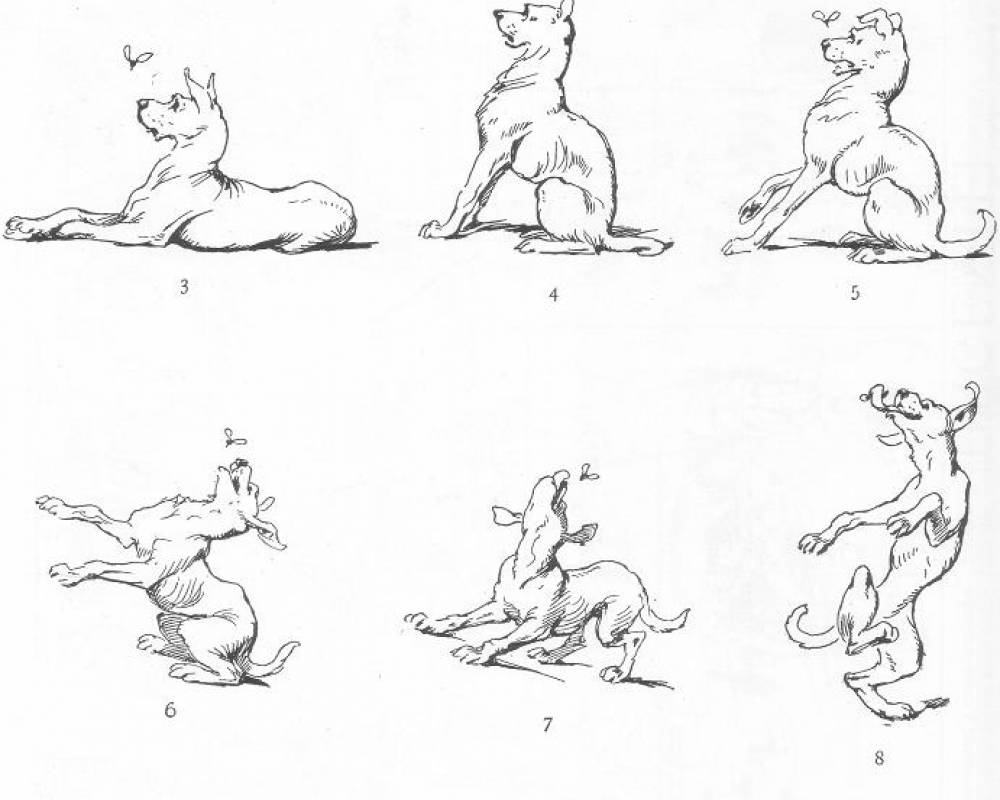
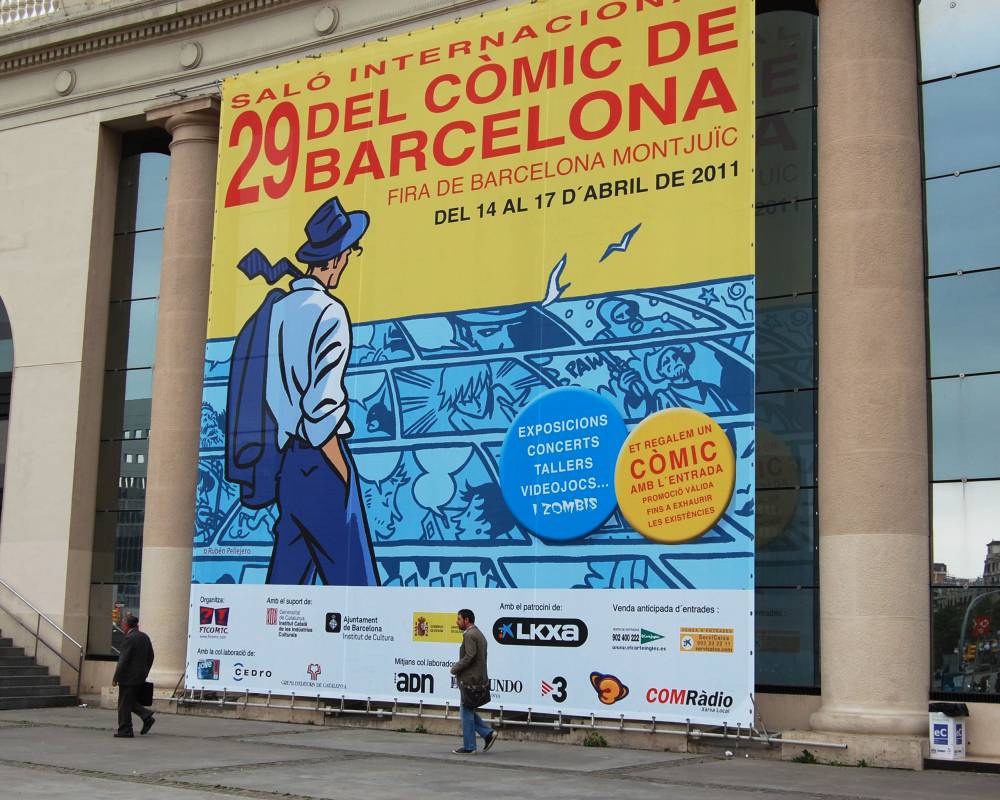
The birth of the 1st Barcelona International Comics Convention in 1981 was the first step towards the cultural, social and even institutional recognition of this discipline.
What later became the Barcelona International Comics Convention has become a reference event in Spain and Europe that receives more than 100,000 visitors a year.
Another crucial moment for Catalan comics was the donation of more than 2,000 original drawings of Les Tres Bessones to the National Library of Catalonia made in 2011 by Roser Capdevila.
One of the most eagerly awaited projects in this sector is the creation of the future Museu del Còmic i la Il·lustració (MCIC - The Comics and Illustration Museum), a project which has currently been stalled. It will be housed in the old CACI building in Badalona (dating from the end of the 19th century), and will exhibit a collection of works by Catalan artists and illustrators as well as international artists.
Barcelona International Comics Convention 2011. Pedro de Matos Flickr CC BY-NC-ND 2.0